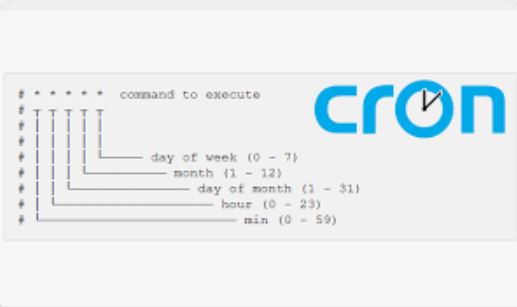
Are you tired of performing repetitive tasks manually? Imagine having a tool that can automate those tasks for you, saving you time and effort. That’s where cron jobs come in. In this article, we will explore what cron jobs are, how they work, and how you can use them to streamline your workflow. So, let’s dive in!
Table of Contents
Introduction to Cron Jobs
Cron jobs refer to automated tasks that execute according to a prearranged timetable. They are commonly used in Unix-like operating systems, including Linux and macOS. With cron jobs, you can schedule scripts or commands to be executed at specific intervals or times. This automation eliminates the need for manual intervention, allowing you to focus on more important tasks.
Understanding Cron Syntax
To effectively use cron jobs, it’s essential to understand the cron syntax. In the realm of cron jobs, a cron expression encompasses five distinct fields, namely minute, hour, day of the month, month, and day of the week. Each field represents a value or a range of values. For example, the expression 0 2 * * * means the task will run at 2:00 AM every day.
Setting Up Cron Jobs
Setting up a cron job involves creating an entry in the cron table, which is a file that stores the cron job configurations. You can use the crontab command to manage your cron jobs. By specifying the desired schedule and the command or script to execute, you can automate various tasks, such as backing up files, updating databases, or sending scheduled reports.
Common Use Cases for Cron Jobs
Cron jobs find applications in various scenarios. Some common use cases include:
1. Website Maintenance
You can schedule cron jobs to perform routine website maintenance tasks, such as clearing caches, updating plugins, and generating backups.
2. Data Backup and Archiving
Automated backups are crucial for data security. Cron jobs can be used to regularly create backups and archive important files or databases.
3. Content Publishing
If you manage a blog or a content-driven website, you can schedule cron jobs to publish articles or update content at specific times.
4. System Monitoring
Cron jobs enable you to monitor system performance by running periodic checks, generating reports, or sending alerts when specific conditions are met.
Benefits of Using Cron Jobs
Using cron jobs offers several benefits, including:
1. Time-Saving Automation
By automating repetitive tasks, cron jobs free up your time, allowing you to focus on more critical aspects of your work.
2. Improved Efficiency
Cron jobs ensure tasks are executed consistently and on time, reducing the risk of human error and improving overall efficiency.
3. Increased Productivity
With the ability to schedule tasks, you can optimize your workflow and accomplish more within the same timeframe.
4. Enhanced Reliability
Cron jobs are reliable and can be set up to send notifications or alerts in case of any errors or failures during task execution.
Potential Challenges and Troubleshooting Tips
While cron jobs are powerful, you may encounter some challenges along the way. Below, you will find several useful suggestions to troubleshoot and conquer typical obstacles:
Command Path: Ensure that the commands or scripts you specify in the cron job have the correct path to execute successfully.
User Permissions: Pay attention to user permissions. Cron jobs run with the permissions of the user who created them, so ensure that the user has the necessary privileges to perform the intended actions.
Logging and Error Handling: Implement logging and error handling mechanisms within your scripts to capture any issues that may arise during execution.
Cron Jobs Best Practices
To maximize the potential of cron jobs, take into account the subsequent recommended approaches:
Regular Review: Regularly review and update your cron jobs to ensure they remain relevant and aligned with your changing requirements.
Documentation: Maintain proper documentation of your cron jobs, including the purpose, schedule, and any special considerations.
Testing and Validation: Test your cron jobs thoroughly before deploying them to a production environment to avoid unexpected issues.
Alternatives to Cron Jobs
While cron jobs are widely used, alternative solutions exist, depending on your specific needs and the technology stack you’re working with. Some alternatives include:
Task Scheduling Libraries: Many programming languages provide libraries for scheduling tasks within your codebase, offering more flexibility and control.
Serverless Functions: Serverless architectures, such as AWS Lambda or Google Cloud Functions, provide event-driven solutions for running code without managing servers explicitly.
Cron Job Security Considerations
When working with cron jobs, it’s important to keep security in mind. Follow these security considerations:
Minimal Privileges: Only grant the necessary privileges to the user running the cron job to minimize the risk of unauthorized access.
Secure Command Execution: Ensure that the commands or scripts executed by cron jobs are secure and protected against vulnerabilities, such as command injection attacks.
Conclusion
Cron jobs are an invaluable tool for automating repetitive tasks and improving productivity. By understanding cron syntax, setting up jobs correctly, and following best practices, you can leverage the power of cron jobs to streamline your workflow and focus on more important aspects of your work.
FAQs
What is the frequency of cron job execution?
Cron jobs can be scheduled to run at any frequency, from every minute to once a year, depending on your requirements.
Can I run multiple cron jobs simultaneously?
Yes, you can schedule multiple cron jobs to run concurrently, as long as they don’t conflict with each other.
How do I edit or delete a cron job?
You can use the crontab command with the appropriate options to edit or delete existing cron jobs.
Can cron jobs be used on Windows systems?
Cron jobs are not natively supported on Windows, but there are third-party alternatives available, such as the Windows Task Scheduler.
Are cron jobs suitable for real-time tasks?
Cron jobs are not designed for real-time tasks that require immediate execution. They are better suited for tasks with longer intervals between runs.
Get Similar Content here: https://www.youtube.com/@innotechtips
In this article, we explored the concept of cron jobs, their syntax, setup process, common use cases, benefits, troubleshooting tips, best practices, alternatives, security considerations, and more. By harnessing the power of cron jobs, you can automate tasks, save time, and improve efficiency in your daily workflow. So why wait? Start leveraging the power of cron jobs today!



